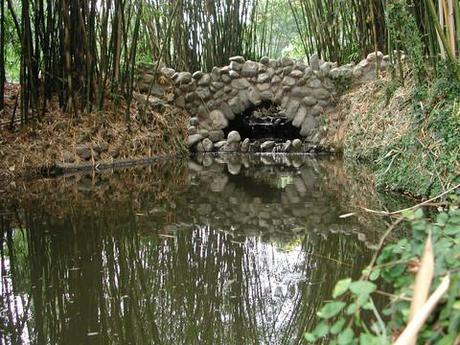
In my last post we talked about our water needs and storing that water, but that was all dependent on having a way to get clean water. Today we’ll focus on the various options for taking “suspect” water and getting it ready to use. There are a lot of different options out there (which I’ll summarize below for the ADHD crowd, but the rest of you can keep reading). I’ll *try* to keep this somewhat brief, but clearly you could actually write a book on this topic.
So you have a stream/lake/pond/puddle that you want to drink out of…now what? Let’s start backwards…your method of last resort.
SODIS
You can use a process called SODIS to use the ultraviolet light provided by the Sun to clean your water. Now this requires that you use clear plastic bottles (other materials my block the UV rays) and the bottles have to sit out in the sun for quite a while (six hours up to two days depending on weather conditions). This method can be effective at killing pathogens that cause diarrhea, but is not 100% effective and should be consider a last resort for an Organized Prepper. That being said it is used a lot in developing countries, you can find out more details here if you are interested.
Boiling
Boiling water is what we get told to do all the time when there is a “problem” with city provided water and for good reason. Boiling is (normally) an easy thing to do and it will kill pathogens/microorganisms and whatever creature may be hiding in your water. But it won’t help at all for water that has other non-organic debris in it. For that reason “natural” sources of water would need to be filtered first. And then there is the energy cost to actually boil that water, which may be a concern in a SHTF scenario.
Chemical Treatments
There are several options here ranging from basic bleach and Iodine to specialized “commercial” products. These treatments are good at removing bacteria, but can be rather limited against other pathogens. Depending on which one, they can also affect the taste of the water. That being said, carrying some Iodine drops or some “commercial” tablets can be a lightweight way to clean water while on the go.
Filtration
Water filters come in all shapes and sizes and basically what it boils down to is the smaller the hole (pore size) the more stuff the filter can remove. Then there are things like flow rate, lifespan, ease of maintenance, etc. but when it comes down to what they protect you from, pore size is king. And something to watch for…you want “absolute pore size.” Be wary of ads talking about “average (or nominal) pore size.” Pathogens don’t care if they have to move over a little bit to find a way into your drink. BTW The CDC maintains a good summary of home water cleaning options which you can find here Also as noted at the CDC, most filters are not good at removing chemical contaminates from water.
As for me, right now the only filter I have any real experience with is the Katadyn Pocket Filter. It’s a microfilter with a pore size of 0.2 microns so it’s good for bacteria and protozoa, but does leave me exposed on the virus front. It is however easy to use and clean and fits nicely in my pack. I intend to supplement with a UV system, but have not done that yet.
Ultraviolet Light
As we mentioned above the SODIS system uses the suns UV rays, but you can also carry a UV system with you which is a lot more effective. UV systems are best for smaller quantities of water, and clearly can’t filter out debris in the water. Also they are less effective when dealing with cloudy water so it’s best to have at least a basic filter as well. UV systems can kill viruses (along with other pathogens) and most are pretty quick to use.
Reverse Osmosis
This method is actually GREAT at removing pathogens, cleaning debris, and is one of the most effective at removing chemicals, but it has major downsides to a prepper. It either needs really high water pressure or electricity for a pump, to get you that water pressure and it’s very wasteful which is a big no-no in my book. It is not very portable either, but that’s not a big concern for those “bugging-in”.
Distillation
Like reverse osmosis this method is great at removing pathogens, cleaning debris, and is one of the most effective at removing chemicals. The downside is that distillation is very slow and requires electricity. It is not a portable option. If your shelter has a reliable electric supply and a tank to store the water, it might not be a bad approach for cleaning your incoming water. As always I’d still have one of the other systems as a backup.
Summary
This table summarizes most of the information above.
On a related note, Organized Prepper carries a variety of chemical treatment, filtration, and UV options which you can check out here
Method
Pathogens
Debris
Chemicals
Notes
SODIS
Removes some
No help
No help
Better than getting diarrhea
Boiling
Removes all
No help
No help
Best for use on mostly “clean” water
Chemical Treatment
Effective on bacteria and some other pathogens
No help
No help
Can negatively impact taste, can take a while, but easy
Filtration
Very effective depending on absolute pore size
Very effective depending on absolute pore size
Limited or no effect
Always look for the absolute pore size
UV Light
Very effective on all pathogens
No help
No help
Needs relatively clear water to work its best
Reverse Osmosis
Very effective
Very effective
Very effective
Needs high water pressure, not portable
Distillation
Very effective
Very effective
Very effective
Very slow, Needs electricity, not portable
